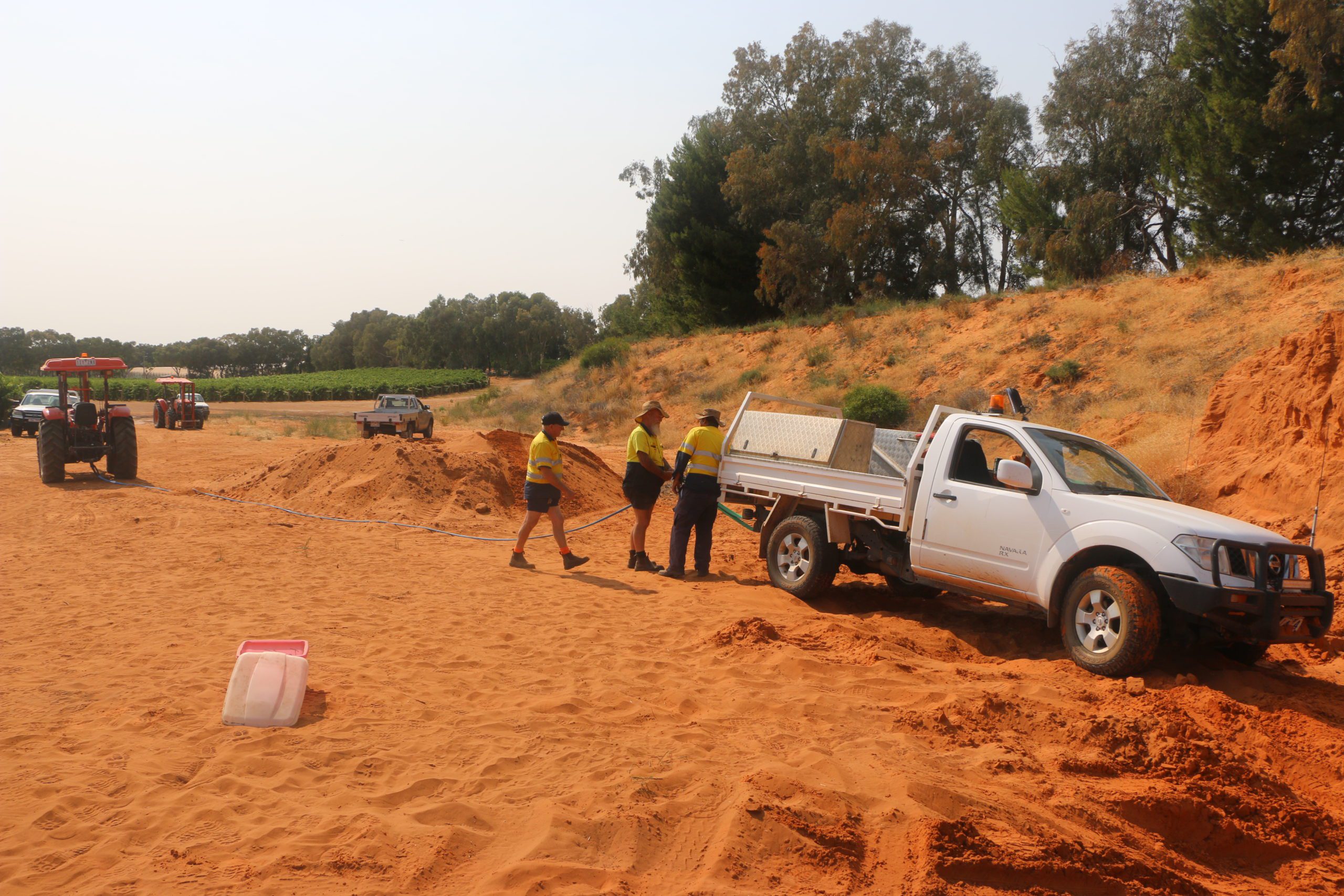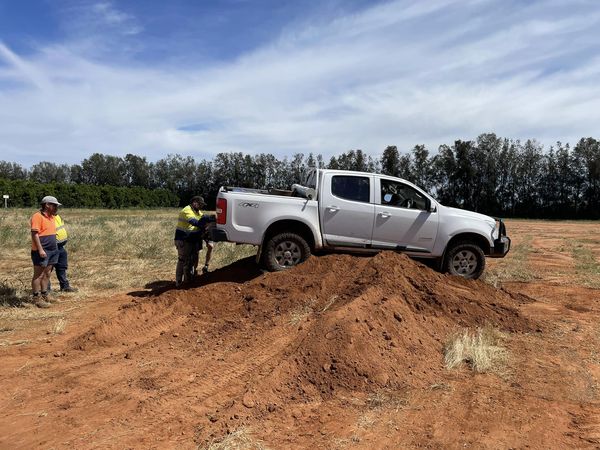Tow Strops, also known as Recovery Strops, are designed for the recovery and towing of agricultural machinery as well as mining, heavy commercial, and military vehicles and plant. Constructed of Dyneema rope, a tow strop offers a high rated minimum breaking strength (MBS) at a lower weight than wire of chains. The low stretch and recoil during the recovery or towing makes the tow strop a safe option to use in all towing conditions.
A tow strop training session includes
- theory that covers W.H & S, tow strop care and maintenance, tow strop operation, MBS and working load limits (WLL), required additional recovery equipment and identifying suitable recovery points.
- practical demonstration of and conducting self recovery techniques.
- identifying recovery points.
- conducting a tow strop recovery.
Contact Greg to discuss your training needs.
Recommended safe recovery practices
- When a vehicle or plant becomes immobilised the operator MUST identify the hazards, assess the risks of injury or harm and implement control measure to mitigate the risks. Worker/s to request assistance where required. Workers to discuss preferred method of recovery.
- Where vehicle recovery is considered to be difficult or dangerous the site supervisor MUST be contacted to engage specialised contractors to assist in the recovery process.
- Approved equipment and towing strops MUST be used. The strop MUST be inspected prior to attempting a recovery of an immobilised vehicle, plant and/or machinery.
- A spotter MUST be used where there is a risk of interaction with plant and ground personal. In other situations a spotter MUST be used if
- An exclusion zone MUST be established and maintained around the recovery site if there is a risk of interaction with plant and ground personal. All personal not directly involved with the recovery process MUST stand clear of the exclusion zone.
- All mandatory PPE, including gloves, MUST be worn throughout the recovery process.
- If PRACTICABLE tow strops MUST be connected horizontally between the immobilised vehicle and the recovery vehicle. If PRACTICABLE the front wheels of the immobilised vehicle MUST be in line with the direction of tow.
- The operator/driver of the immobilised vehicle MUST select the appropriate gear, (either forward or reverse) and assist the recovery vehicle by applying moderate acceleration.
- There MUST be no metal-on-metal contact made in an attempt to push disabled or immobilised plant, equipment and/or vehicles.
- All towing activities MUST be coordinated by the use of a spotter who is using hand signals to control the recovery. Vehicle and/or hand-held UHF (two way) radios MUST be used for the purpose of communication between all workers if it is not PRACTICABLE for a spotter to be present to oversee the recovery. Approved hand signals or radio commands MUST be used when communicating commands during the recovery.
- After recovering any immobilised vehicle or plant/equipment the area MUST be rehabilitated or marked as hazardous until rectified when reasonably practicable.
- All recovery equipment MUST be cleaned and inspected prior to storage. Any damaged equipment MUST be withdrawn from service and tagged with either a warning or “DO NOT USE” tag. The damage MUST be reported to a supervisor.




